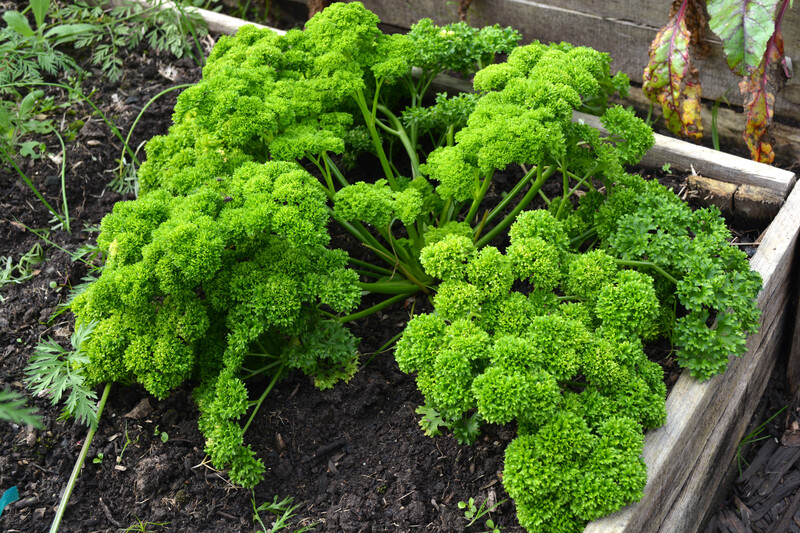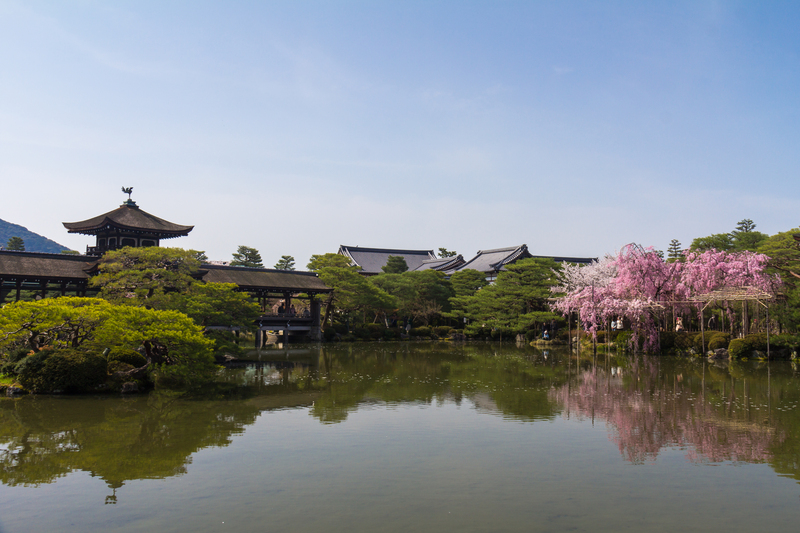Frugal Gardening: Low Maintenance on a Tight Budget
Posted on 21/06/2025
Frugal Gardening: Low Maintenance on a Tight Budget
Gardening is often seen as an expensive, time-consuming hobby, but it doesn't have to be. You can create a lush, beautiful, and fruitful garden without spending a fortune or dedicating all your free time to upkeep. Frugal gardening is the practice of growing plants and vegetables with minimal financial input and low maintenance requirements. Whether you have a sprawling backyard or a tiny balcony, you can cultivate your own slice of paradise on a tight budget.
What is Frugal Gardening?
Frugal gardening is all about making the most of what you have. It means using budget-friendly materials, minimizing waste, and employing smart strategies to lower costs. This practice not only saves money but also reduces workload, making it a low maintenance garden solution for busy people.
Benefits of Frugal and Low Maintenance Gardening
- Cost savings - No need for costly tools, chemicals, or designer plants.
- Eco-friendly - Repurposing and recycling materials reduces landfill waste.
- Less work, more joy - Choosing the right plants and methods means less time weeding, watering, and fussing.
- Sustainability - Grow your own food and support pollinators with minimal resource use.
- Creativity - Frugal gardening inspires innovative thinking for problem solving.

How to Start a Frugal, Low Maintenance Garden
(Low cost gardening can be highly rewarding!) The keys are planning, resourcefulness, and choosing the right plants and techniques. Here are steps to guide you:
1. Plan Before You Plant
- Assess your space - Does it get sun? Is the soil healthy? Can you use containers?
- Set your priorities - Are you focused on flowers, edibles, or both?
- Start small - Avoid overwhelm by planting a manageable area first.
2. Source Free or Cheap Materials
- Reuse and upcycle - Old buckets, tires, and pallets make great planters.
- Swap seeds/plants - Check community gardens, local groups, and online swaps.
- Collect cuttings - Many plants root easily from a friend's trimmings.
- Compost - Make your own soil by composting kitchen scraps and yard waste.
3. Choose the Most Frugal, Easiest Plants
Some plants thrive on neglect, resist disease, and require little water or maintenance.
- Perennials - Plant once, enjoy for years. Examples: Lavender, chives, hostas.
- Native species - These plants evolve to your climate and are often the most robust and low-maintenance.
- Hardy vegetables - Lettuce, kale, bush beans, potatoes, and radishes usually need little fuss.
- Self-seeding annuals - Calendula, nasturtium, poppies, and sunflowers return each year if allowed to drop seed.
Tip: Investigate your local extension office or garden club for plant recommendations specific to your area!
4. Mulch and Water Wisely
Watering can be one of the highest costs--in time and money. Mulching helps keep soil moisture in and weeds out, meaning you water less and work less.
- Grass clippings, leaves, newspaper - All make great, free mulch.
- Rain barrels - Capture free water for your plants if allowed in your area.
- Drip irrigation - Use recycled bottles or soaker hoses set on timers to deeply water with little waste.
Top Cost Saving Gardening Tips for Beginners
Get Creative with Containers
You don't need fancy pots. Almost anything that holds soil and has drainage holes will work. Try:
- Plastic tubs with holes drilled in the bottom
- Old baskets lined with burlap
- Retired boots or shoes for a whimsical touch
- Broken buckets and watering cans
Make Your Own Plant Supports
Skip commercial cages and trellises. Instead, construct supports from:
- Pruned branches and twigs (tie together with string)
- Bamboo poles or old broom handles
- Wire coat hangers bent into shapes
DIY Seed Starting
Instead of buying seedlings or expensive supplies, start seeds in:
- Egg cartons
- Toilet paper rolls
- Milk cartons or yogurt cups with drainage holes
Use a simple grow light or a sunny windowsill to raise healthy seedlings.
Frugal Maintenance: Keeping Your Garden Low Effort
1. Embrace Dense Planting
Plant close together to shade out weeds and conserve water. This method also maximizes yields from your space--a principle from square-foot gardening.
2. Choose Ground Covers
In place of weedy lawn or empty beds, plant ground covers like creeping thyme, clover, or vinca. These require little mowing or care after they're established.
3. Let Nature Help
- Leave the leaves - Fallen leaves make free mulch and habitat for beneficial insects.
- Invite pollinators - Simple flowers attract bees and butterflies for free plant pollination and beauty.
- Encourage predatory insects - Ladybugs and lacewings help control pests without you spending on sprays.
4. Avoid Over-Fertilizing
Commercial fertilizers can be costly and unnecessary, especially if you compost and mulch. A handful of compost or worm castings now and then goes a long way in nourishing plants affordably.
Frugal Vegetable Gardening: Huge Yields, Tiny Outlay
Grow What You Eat Most
Maximize savings by planting crops your family enjoys and spends the most money buying. Greens, tomatoes, peppers, beans, and zucchini are famously productive and easy to grow.
Successive Planting for Continuous Harvest
Stagger planting times so you enjoy fresh vegetables for months rather than all at once. This reduces food waste and maximizes the productivity of each square foot.
Easy-Care, Budget-Friendly Vegetables:
- Salad greens: Ready to pick in as little as 30 days, regrow after cutting, and thrive in containers.
- Radishes: Quick, reliable, and can be squeezed in between slower-growing crops.
- Potatoes: Produce abundantly in bags, baskets, or stacked tires filled with soil.
- Cherry tomatoes: More disease-resistant and reliable than large varieties.
- Beans: Pole and bush beans are classic low-maintenance, high-yielding crops.
Common Mistakes in Frugal and Low Maintenance Gardens (and How to Avoid Them)
- Overbuying and overspending at the start - Start small and let your garden expand naturally over a few years.
- Ignoring soil health - Soil is the foundation. Amending it with compost and organic matter is cheaper and more effective than chasing miracle fertilizers.
- Choosing high-maintenance plants - Research before you buy! Some plants simply need too much fuss or have pest/disease problems not worth dealing with frugally.
- Forgetting about perennial edibles - Perennial onions, asparagus, rhubarb, and berries provide food year after year for little ongoing effort.
- Poor watering habits - Water deeply but less frequently to encourage deep roots and drought-resistance.
Where to Find Free or Cheap Gardening Supplies
- Online buy-nothing groups (Facebook, Nextdoor, etc.) are a gold mine for free pots, tools, and even plants.
- Curbside finds - Watch for discarded buckets, hoses, and old tools during spring cleaning season.
- Composting sites or city mulch programs - Municipalities often offer free or low-cost compost and wood chips.
- Community swaps - Check with local garden clubs or farmer's markets for seed and plant exchanges.
Smart Strategies for Frugal, Low Maintenance Flowers
Focus on Perennials
Buy once, enjoy for years! Daylilies, iris, coreopsis, and coneflowers return bigger and better each season, often requiring only an occasional division to keep them happy.
Grow from Seed
Annuals like zinnias and cosmos are easy to start from seed, cost pennies, and often self-seed for next year's blooms with zero work from you.
Share and Divide
Swap extra bulbs or perennial divisions with neighbors, friends, or garden clubs for instant variety with zero cost.
Year-Round Low Maintenance Garden Care Calendar
- Spring: Direct sow hardy seeds, prep beds with compost, and plant perennials.
- Early summer: Mulch heavily to suppress weeds, water wisely, and spot-sow empty spaces.
- Mid-late summer: Deadhead flowers, harvest veggies, and start fall crops from seeds.
- Fall: Collect seeds, mulch beds with leaves, and plant garlic or spring bulbs.
- Winter: Plan next year's garden, repair tools, order seeds, and let beds rest under mulch.

Frequently Asked Questions About Frugal, Low Maintenance Gardening
A: Yes, especially with a frugal approach! The larger your garden and the more staple crops you grow (greens, tomatoes, beans), the more you save. Factor in the health and quality benefits as well.
A: Container gardening on balconies and patios is highly effective. Use any recycled containers, focus on compact or dwarf plant varieties, and prioritize leafy greens and herbs.
A: Mulch! It locks moisture in and smothers weeds. Also, select plants well-suited to your area for fewer pest/disease problems.
A: Start a compost pile with kitchen scraps, leaves, and yard trimmings. Let nature transform this into rich, dark, crumbly compost for your garden.
Conclusion: The Joy of Frugal, Low Maintenance Gardening
Frugal gardening doesn't just save money--it rewards you with a thriving, productive, and beautiful space that reflects your creativity and care. By focusing on low maintenance gardening techniques, affordable materials, and clever planting, anyone can enjoy the many benefits of gardening, no matter how tight the budget or limited the free time. Start small, think big, and let your frugal garden blossom!
Ready to begin your own journey in low-cost, low-maintenance gardening? With a few smart choices, a little ingenuity, and a willingness to reuse and recycle, you can embark on a frugal gardening adventure that brings beauty, bounty, and satisfaction for years to come.

